This is another one of those listings that really more amazing than “looney.”
I mean, they did overdo it on the HDR on a few of the interior shots…
But that view. Whoa.
This shot from the “virtual tour” is pretty great, too.
Seems totally safe. Have fun, kids!
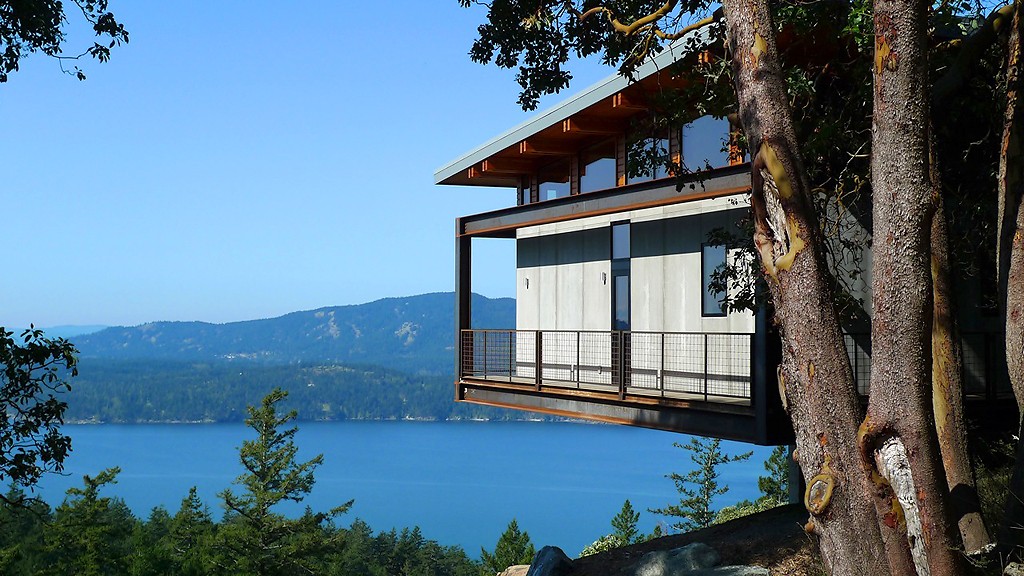
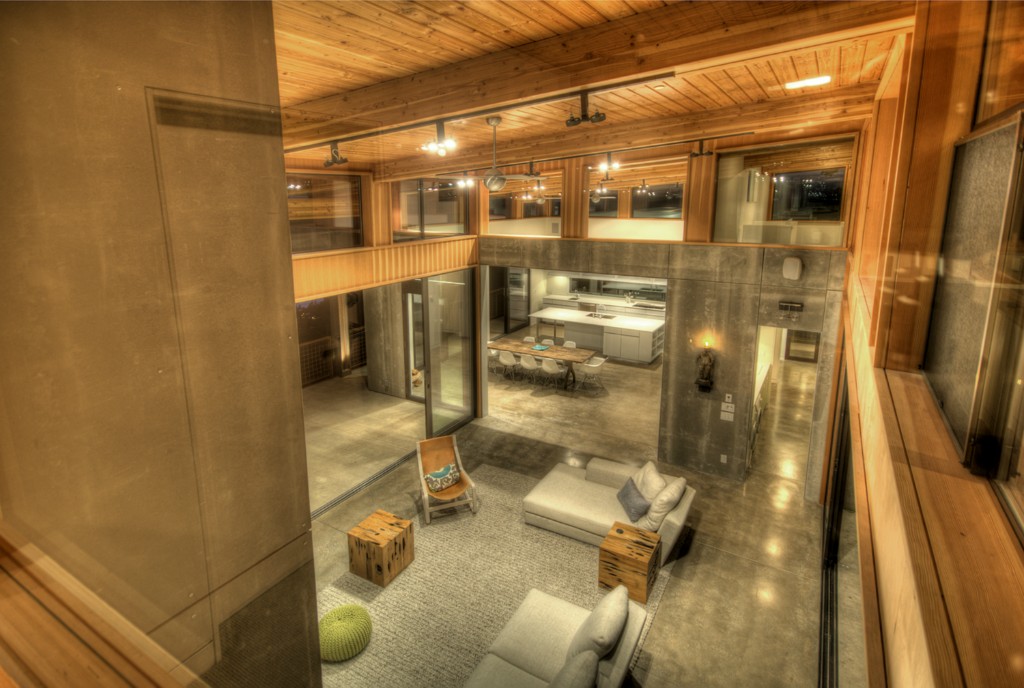
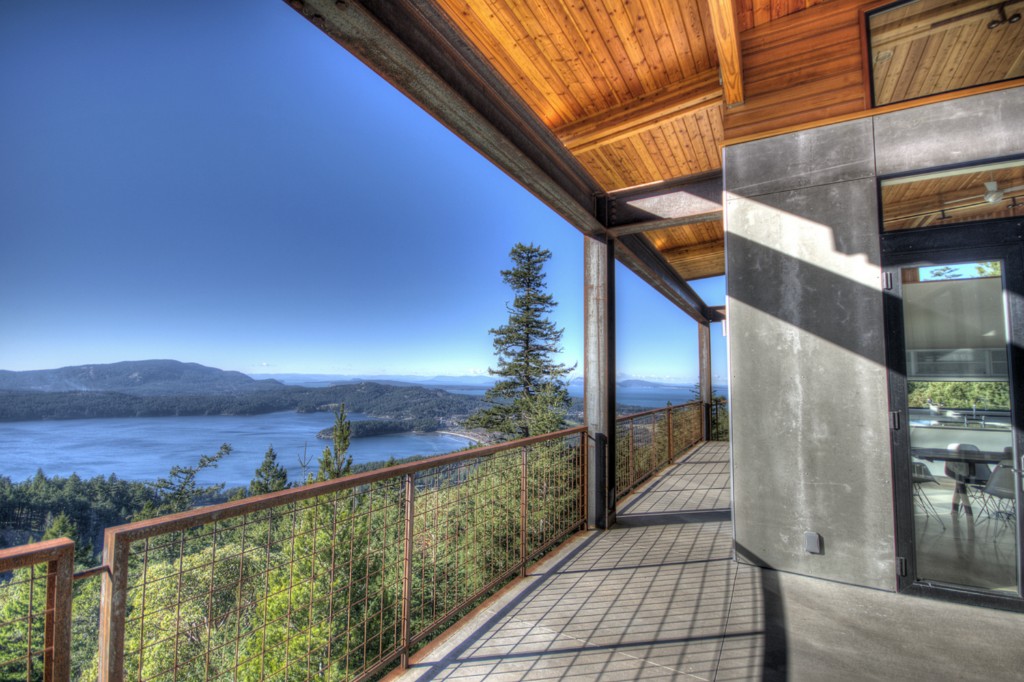
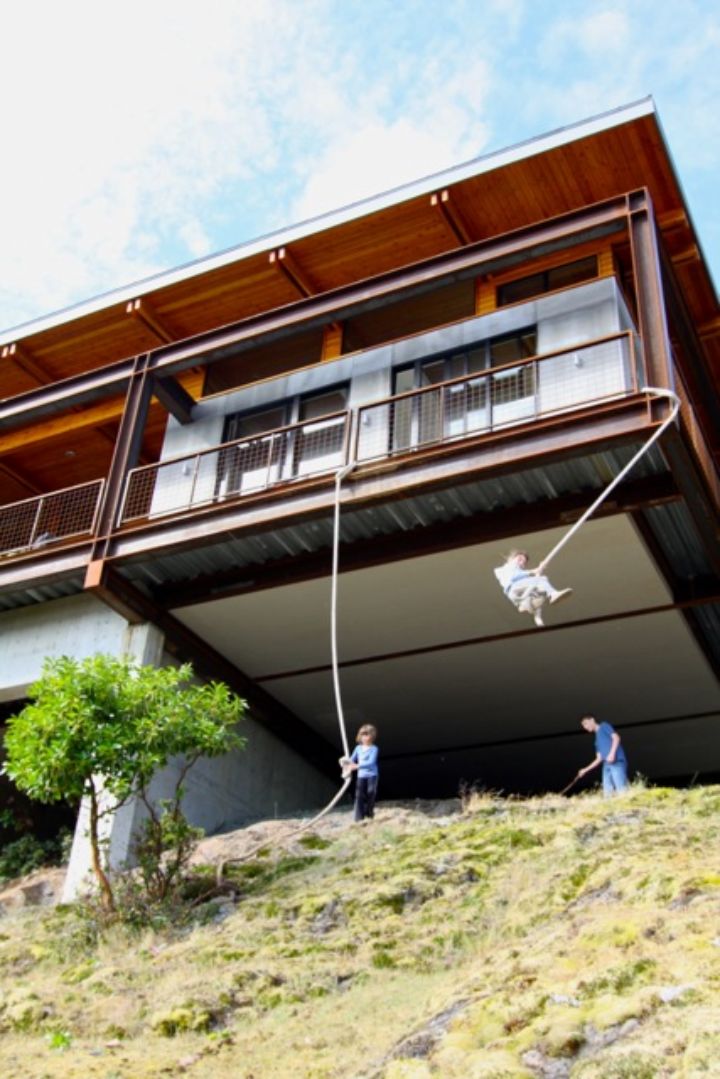
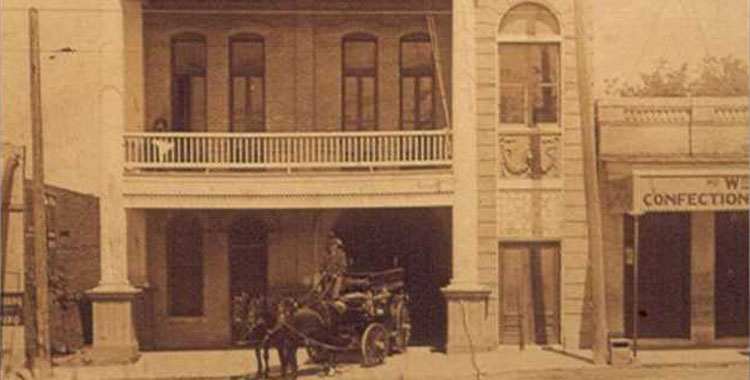
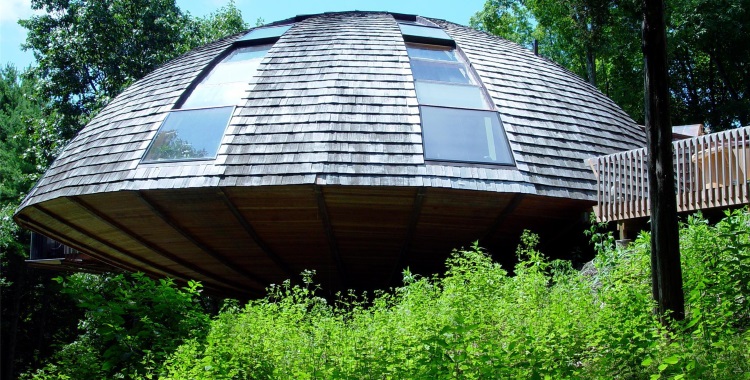
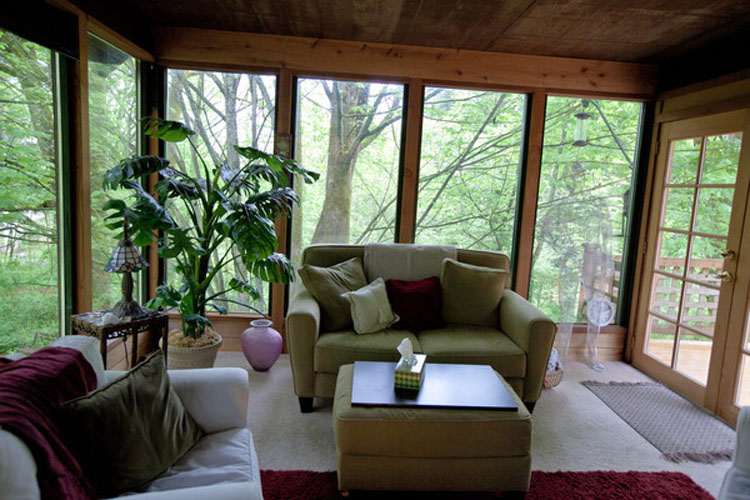
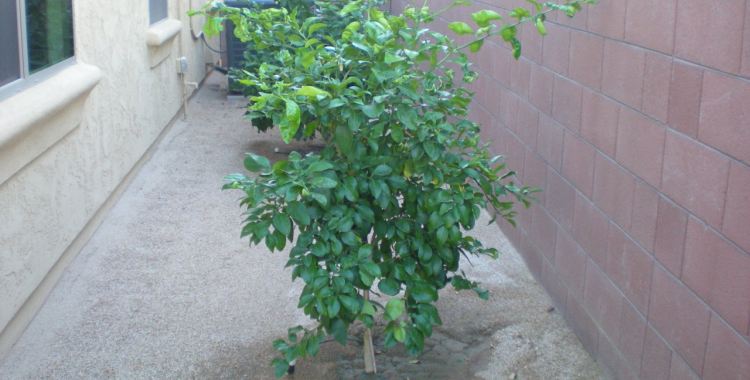
The view is great! The window in the kitchen is cool.
The windows in the toilet and shower are not. The bedrooms look less than comfortable. The one bedroom looks like summer youth camp with 4 close-quaters bunks and built-in wardrobes: “Sorry, Jimmy, Susie, Timmy, and Sally, you’ll have to share the same bedroom. Toys? You can have a stuffed animal each to put in your bed. Me and mom are going to our picturesque prison cell.”
@Frodo: Yeah… you pretty much took the words right out of my mouth, Frodo. I’d add that all that polished concrete makes me feel cold just looking at it; I can just imagine it sucking the body heat right out. And that’s with all the greenery showing through the windows. Do not want to imagine the same place covered in snow with lead gray skies for days on end, although… they would color coordinate with the concrete…
Also not sure about how this structure would do during an earthquake. The steel looks doable, but there’s just sooo much tension-poor concrete. Even with adequate re-bar you’re gonna come up with some nasty cracks, maybe even some game-enders. Now a tsunami, on the other hand, would likely not be an issue. Between the altitude and the raised floor level you might even have town folk politely seeking shelter with you. Or maybe not politely… Then again, when the Cylons nuke Seattle there won’t be any town folk left. Or you left either… Dang.
In the listing, for parking, it says “No Parking”. So it’s for hikers only?
@Rincewind: Really? No parking? I missed that. What about a dock? Is there a dock somewhere? The listing is on an island in the straits between the Washington mainland and Vancouver Island. But since it’s not anywhere close to a dock there would indeed be at least some hiking involved. I hear that sort of thing is popular up that way. Not so much here in central Kansas.
Well, it does have some extremely pleasing proportions that present the magnificent views in very beautiful, calm, Japanese embrasures as it were.
I don’t begin to have the architectural grasp necessary to express or explain what I’m going to say next, but I think the problem with the place is that the ceilings are too high. To my imagination, the interior cathedral rise competes with the view out the windows by attempting to lead the eye upward to the admittedly lovely ceilings in a jarring competition that the ceiling loses after a short, sharp struggle that defeats the otherwise serene Japanese spirit of the place.
Bizarre as it seems (even to me), I think lower ceilings would improve one’s appreciation of the space and the view… not to mention make the place easier to heat.
@anodean: I don’t recall if there’s a particular term for what you’re describing about the ceilings, but I do understand what you mean. I think maybe the architects were trying to replicate the open airy feeling one gets in the area, but by doing so they’ve removed the singular nature of that sensation. Lower ceilings would achieve two things: 1) they would humanize the interior space by scaling it to the size of people, and 2) they would in turn emphasize the enormity of the outdoors, highlighting it rather than the interior.
The overwhelming sensation of enormous interior spaces has been used specifically for their effect on the human psyche, notably to awe or intimidate, sometimes both. My own personal experience with the phenomenon was inside St. Peter’s in Rome. My Catholic traveling companion felt it related the enormity of God while I was inclined to think it related the enormity of the Renaissance era Church’s desire to project its own power. I can see how his point of view is possible; I’ve felt the same thing, but in natural settings. In this instance the scale of the place is so out of proportion to human beings that there is little if any sense of being connected with the Divine, which is the purported purpose of the place.
In this house the awe-inspiring part is the outdoors. Trying to vie with it for that role is a non-starter and, hence, fails.
@anodean: BTW, traditional Japanese architecture has a very ordered hierarchy of size, working from basic spatial units that are multiplied in number, either in whole or in specified fractions, for larger spaces. But it’s more than simply bringing in more units. They are related to one another and to the overall space in what number are used and how they are grouped. There is always an interplay between the small, individual unit and the larger space, as well as it’s subdivisions. It creates a delightful “communication” of all aspects of the greater space and, importantly, the human beings within it since the basic unit is scaled to humans.
In homes, this is easily seen by the use of standard size tatami mats and shoji screens. But the full-on architectural concept is based in the concept of “ken.” There’s a short article about it here: http://en.wikipedia.org/wiki/Ken_%28architecture%29
A similar concept is sometimes used in historical architecture elsewhere, though it has been inconsistently applied. This is the “Golden Mean” or “Golden Ratio.” You can read about its uses here: http://en.wikipedia.org/wiki/Golden_ratio#Architecture